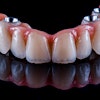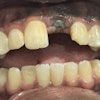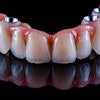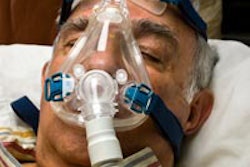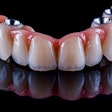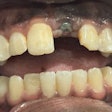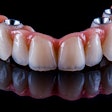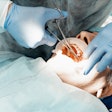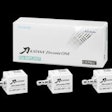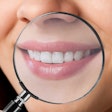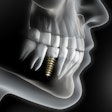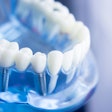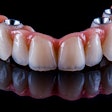
The gold standard for the treatment of obstructive sleep apnea (OSA) is continuous positive airway pressure (CPAP). Unfortunately, more than 50% of the patients who are prescribed this form of therapy do not use it for a variety of reasons.
Oral appliances have helped many in this population of non-CPAP compliance overcome the problems associated with sleep apnea. The vast majority of this patient group has their teeth, which provides retention for the large variety of oral appliances that are currently being used.
But what do you do when the patient wears dentures, has sleep apnea, and cannot tolerate CPAP? The following is a case report of a patient who was referred to my office by his ENT physician for treatment of CPAP intolerance.
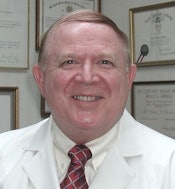 Walter J. Kucaba, DDS.
Walter J. Kucaba, DDS.James is a 65-year-old man who suffers from sleep apnea. His sleep study indicated that he had moderate OSA. He has been wearing dentures for years with the resulting progressive bone loss in the maxillary and mandibular arches. The loss of alveolar bone in the mandibular arch was greater than the loss in the maxilla. His lower denture had no retention. He could not tolerate the prescribed CPAP, even after trying different masks and straps.
I knew I could help him stabilize and retain his lower denture with reduced diameter implants (mini-implants). If the implants could retain his lower denture, why could they not help retain the mandibular portion of an oral appliance? After presenting the treatment plan, he agreed to have mini-implants placed in the mandible and an oral appliance made.
The first stage of treatment was to place four 2.0 reduced diameter implants into the intraforaminal area of the mandible. Because of the degree of resorption, a full flap was reflected so that the mandible could be visualized. This was done using only a local anesthetic.
Visualizing the mandible, I was able to accurately place and parallel four implants. The flaps were then replaced and sutured. The patient's denture was relined before the procedure. After placement of the implants, his relined denture was retrofitted with four retentive housings and seated. The mini-implants provided immediate retention for his denture and he was able to function without any of his previous problems.
After total healing had occurred, treatment with an oral appliance for his sleep apnea was started and impressions were taken to fabricate bite rims. Using these rims, the protrusive position was determined. The models, bite rims, and four retentive housings were sent to Respire Medical in New York City for fabrication of the oral appliance.
The appliance was then delivered to the patient. The orthotic fit the implants and they provided the necessary retention needed to retain the appliance during function. The patient went through a break-in period requiring adjustments to both the maxillary and mandibular appliances similar to that experienced with full dentures. The amount of protrusion has been adjusted forward one time to get the desired results.
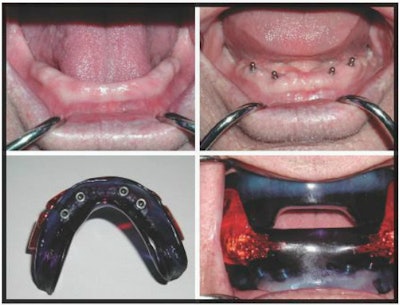 Image courtesy of Sleep Group Solutions.
Image courtesy of Sleep Group Solutions.The patient's wife reports that he no longer keeps her up with snoring and his daytime sleepiness has resolved. He also feels that he has more energy and that the appliance has changed his life for the better. I usually allow for a two-month trial period before I send patients back to their sleep physician for another sleep study.
Because of the success I have had with this case and others similar to this one, I am seeing more denture patients being referred to me for orthotics that need to be implant-retained. The reduced diameter implants have been able to change the quality of life for these patients in two ways: by providing retention for their denture and also allowing then to have an alternative to CPAP.
Walter J. Kucaba, DDS, practices in Spartanburg, SC. He is a member of the American Academy of Dental Sleep Medicine.
The comments and observations expressed herein do not necessarily reflect the opinions of DrBicuspid.com, nor should they be construed as an endorsement or admonishment of any particular idea, vendor, or organization.
